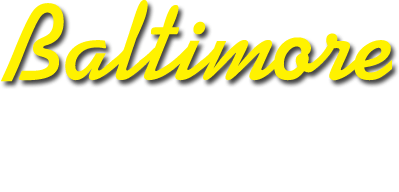![]()
ONLINE
![]()
ONLINE

A Truly Universal Bank
Editors’ Note
The recipient of a BS in business administration from the University of North Carolina at Chapel Hill, Laura Gamble has held her current post since 2002. Since joining Bank of America 22 years ago, Gamble has served in numerous roles with the company, including Regional Executive of Premier Banking and Investments, Treasury Management Executive, and Client Manager. She is currently a member of several civic and nonprofit boards of directors, and acts as Chair of the board of the Economic Alliance of Greater Baltimore and as Vice Chair of the Central Maryland Transportation Alliance.
Company Brief
Charlotte, North Carolina-based Bank of America Corporation (www.bankofamerica.com) is one of the world’s largest financial institutions, serving individual consumers, small and middle market businesses, and large corporations with a range of banking, investing, asset management, and other financial and risk-management products and services. The company serves more than 57 million consumers and small businesses in 175 countries through more than 5,700 retail banking offices, more than 17,000 ATMs, and online banking services. Bank of America Corporation is listed on the New York Stock Exchange under the ticker symbol BAC.
Are you satisfied with the strength of Bank of America’s business in the Maryland market?
Absolutely. We’re number one in market share, and according to the FDIC’s June 2007 numbers, we are continuing to grow in the market. Maryland is one of our top markets because of both our existing presence and our prospects for growth. We can continue to have the number-one market share and successfully defend it.
Banking is a competitive industry. How do you demonstrate what makes Bank of America unique amongst its competitors?
We’re always working to demonstrate our unique attributes, because people get their information in so many different ways. So we have to deliver products and services in a lot of different ways. Over the past 10 years, our online banking products have helped our brand significantly, and our newest addition to that is mobile banking. That technological edge combined with our size and scale – which is truly unmatched in the industry – gives our customers and our prospects some strong reasons to bank with us.
Bank of America offers a broad range of services. Do you focus on specific niches within those service groups?
We see ourselves as one of the few truly universal banks, meaning there is no financial need – either consumer-related or institutional – that we cannot meet. That’s the key to our future growth. I tell my associates, “A banking center client can also be a commercial client or a credit card client.” We can’t put our clients in silos. They should interact with our company in a variety of ways.
Will online banking services ever replace the need for banking centers?
Someone made that statement when computers started to become more prevalent, that online banking would eliminate the need for banking centers, but we haven’t seen that yet. That’s why we continue to invest in brick-and-mortar. I can’t foresee a time when people will not want human interaction. Banking is still as much an art as it is a science.
Have the concepts of diversity and inclusion been important to the Bank of America culture?
Diversity is incredibly important to us. In 20 years, the domestic workforce will look vastly different than it does now. It’s very important for our workforce to mirror our client base. So we have pushed for diversity in our recruiting for a long time – we have a lot of women in our business, for example. We’re pleased to be one of most diverse employers in the U.S.
Do you also emphasize the importance of your employees’ involvement in their communities?
Bank of America is proud to be one of the largest corporate philanthropists in the U.S. It’s incredibly important. Hugh McColl [former Chairman and CEO of Bank of America] felt very strongly about it and called it “enlightened self-interest,” because if our communities aren’t thriving, our business will suffer. So there’s a very good business reason to be engaged in the community.
You are Chairman of the Economic Alliance of Greater Baltimore. Have you been pleased with the Alliance’s impact on the Baltimore area?
I have been happy with it. We have a very strong team and that makes a tremendous difference. Leadership is extremely important, particularly in a not-for-profit environment. Christian [Johansson] is a very bright, energetic, and passionate leader, and his team acts as a force to pull together regional resources and assets. Regionalism is very important for the greater Baltimore area. Greater Baltimore represents 2.5 million people and some of the wealthiest counties in the nation. If we band together to promote our assets, we make a much stronger case. In addition to its regional perspective, the Alliance also benefits from a strong public-private partnership. It’s one of the few organizations that pulls together businesses, county executives, the Mayor of Baltimore, and the Lieutenant Governor, all for the common good. That’s extremely powerful.
Are people in greater Baltimore aware of all of the progress that has been made in the city and its surrounding areas?
No, I don’t think people realize the transformation, but I think people outside the region understand it better than those within the region. A lot of folks in the region still envision it the way it was in the ’50s, ’60s, and early ’70s and aren’t aware of how well we’re doing with a variety of key economic measures. Compared to our old peer group – Pittsburgh, Cleveland, and St. Louis – we have so much more growth in per capita income, business development, and capital investments. We actually look much more like Denver, Seattle, Minneapolis, or Phoenix these days.